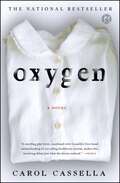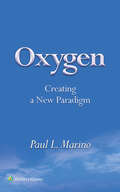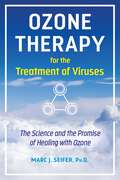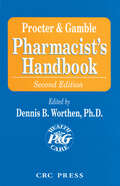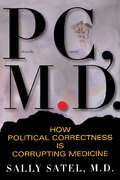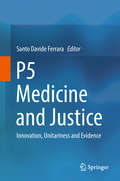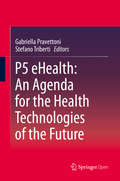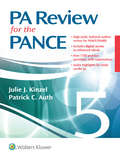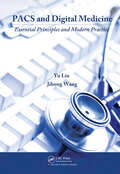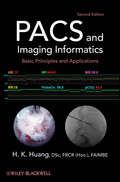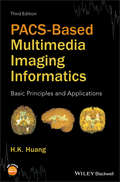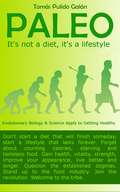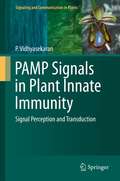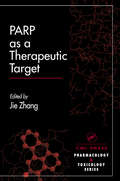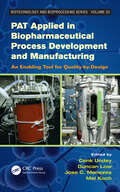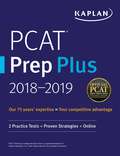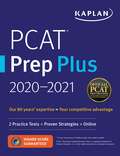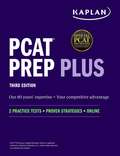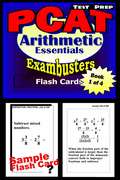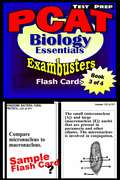- Table View
- List View
Oxygen: A Novel
by Carol CassellaJodi Picoult meets Atul Gawande in this bestselling novel that blends compelling women&’s fiction and medical drama to create an &“involving debut that&’s just what the doctor ordered&” (People).Dr. Marie Heaton is an anesthesiologist at the height of her profession. She has worked, lived, and breathed her career since medical school, and she now practices at a top Seattle hospital. Marie has carefully constructed and constricted her life according to empirical truths, to the science and art of medicine. But when her tried-and-true formula suddenly deserts her during a routine surgery, she must explain the nightmarish operating room disaster and face the resulting malpractice suit. Marie’s best friend, colleague, and former lover, Dr. Joe Hillary, becomes her closest confidante as she twists through depositions, accusations and a remorseful preoccupation with the mother of the patient in question. As she struggles to salvage her career and reputation, Marie must face hard truths about the path she’s chosen, the bridges she’s burned, and the colleagues and superiors she’s mistaken for friends. A quieter crisis is simultaneously unfolding within Marie’s family. Her aging father is losing his sight and approaching an awkward dependency on Marie and her sister, Lori. But Lori has taken a more traditional path than Marie and is busy raising a family. Although Marie has been estranged from her Texas roots for decades, the ultimate responsibility for their father’s care is falling on her. As her carefully structured life begins to collapse, Marie confronts questions of love and betrayal, family bonds and the price of her own choices. Set against the natural splendor of Seattle, and inside the closed vaults of hospital operating rooms, Oxygen climaxes in a final twist that is as heartrending as it is redeeming.
Oxygen: Creating a New Paradigm
by Paul MarinoThis unique work from acclaimed author Dr. Paul Marino (Marino’s The ICU Book, The Little ICU Book) challenges the traditional notion that the human body thrives on oxygen, and that promoting tissue oxygenation is necessary for promoting life. This concept fails to recognize that oxygen is a destructive molecule that also damages the human body. Instead of welcoming oxygen, the human body limits exposure of the tissues to oxygen, and employs an army of chemical antioxidants to combat the damaging effects of oxygen. This “oxygen protective” human design represents a new paradigm for the relationship between oxygen and human survival, and it has important implications for the excessive and unregulated use of oxygen in clinical practice.
Oxytocin, Vasopressin, and Related Peptides in the Regulation of Behavior
by Martin Kavaliers Elena Choleris Donald W. PfaffThe mammalian neurohypophyseal peptide hormones oxytocin and vasopressin act to mediate human social behavior - they affect trust and social relationships and have an influence on avoidance responses. Describing the evolutionary roots of the effects that these neuropeptides have on behavior, this book examines remarkable parallel findings in both humans and non-human animals. The chapters are structured around three key issues: the molecular and neurohormonal mechanisms of peptides; phylogenetic considerations of their role in vertebrates; and their related effects on human behavior, social cognition and clinical applications involving psychiatric disorders such as autism. A final chapter summarizes current research perspectives and reflects on the outlook for future developments. Providing a comparative overview and featuring contributions from leading researchers, this is a valuable resource for graduate students, researchers and clinicians in this rapidly developing field.
Oxytocin: Methods and Protocols (Methods in Molecular Biology #2384)
by Eryn L. Werry Tristan A. Reekie Michael KassiouThis detailed book explores techniques for further elucidating the peripheral and central roles of oxytocin as well as techniques key to oxytocin receptor-related drug discovery. The first set of chapters explore this neuropeptide’s peripheral and central effects, such as regulation of myometrial contraction, induction of cardioprotective effects, and the facilitation of pro-social behaviors. The book then continues by delving into a comprehensive pharmacological characterization of oxytocin receptor ligands and ligands of other key receptors such as the vasopressin receptor family. Written for the highly successful Methods in Molecular Biology series, chapters include introductions to their respective topics, lists of the necessary materials and reagents, step-by-step, readily reproducible laboratory protocols, and tips on troubleshooting and avoiding known pitfalls. Authoritative and practical, Oxytocin: Methods and Protocols is an ideal guide for researchers seeking to further our knowledge of the varied and power effects of oxytocin within the central nervous system.
Ozone Therapy for the Treatment of Viruses: The Science and the Promise of Healing with Ozone
by Marc J. SeiferExamines how ozone therapy disables viruses, fights inflammation and bacteria, and enhances the immune system• Explores the science and history of ozone therapy as well as its success in the treatment of viruses and infections, such as Covid-19 and Lyme disease• Presents articles from leading ozone therapy doctors and researchers, including Robert Rowen, M.D., Howard Robins, D.P.M., and Gerard Sunnen, M.D.• Shares numerous case studies from more than a dozen doctors to show how Covid-19 patients have been treated successfully with ozone therapyRevealing ozone therapy&’s enormous potential to bring health to millions, Marc Seifer, Ph.D., explores its science and history as well as its success in the treatment of illnesses such as COVID-19, pneumonia, tuberculosis, Lyme disease, and the flu. He examines research performed by scientists and medical doctors going back more than 200 years that conclusively shows that ozone is a powerful disinfectant with antibacterial and antiviral properties. He shares case studies and clinical evidence from leading ozone therapy doctors and researchers, including Robert Rowen, M.D., Howard Robins, D.P.M., and Gerard Sunnen, M.D. Unmasking the suppression of this revolutionary therapy by the FDA, Seifer shows not only how ozone therapy is effective against current viruses such as COVID-19 and Ebola but also how it can help the immune system learn to protect itself against emerging future viruses.
P & G Pharmacy Handbook
by Dennis WorthenNow readers can have medical terms, abbreviations, and patient counseling principles right at their fingertips. P & G Pharmacist's Handbook, Second Edition begins with an Inverted Medical Dictionary to translate lay terminology to more technical vocabulary and an Eponyms section to translate medical terminology to language that is comprehensible to patients. It includes medical abbreviations, terms used in prescription writing, and references such as normal laboratory values, conversion factors, and weights and measures. These features make P & G Pharmacist's Handbook, Second Edition a convenient and handy resource for the practicing pharmacist.
P.c., M.d.
by Sally SatelDrawing on a wealth of information PC, M. D. documents for the first time what happens when the tenets of political correctness-including victimology, multiculturalism, rejection of fixed truths and individual autonomy-are allowed to enter the fortress of medicine.
P5 Medicine and Justice: Innovation, Unitariness And Evidence
by Santo Davide FerraraThis book describes the state of the art and future prospects of the most important bio-medicolegal subdisciplines in the post-genomic framework of personalized medicine. Focusing on the three main themes Innovation, Unitariness and Evidence, the book addresses a wide range of topics, including: Bio-Medicolegal and Criminological Sciences, Forensic Pathology and Anthropology, Clinical and Forensic Medicine in Living Persons (from Interpersonal Violence to Personal Injury and Damage, Malpractice, Personal Identification and Age Estimation), Forensic Genetics and Genomics, and Toxicology and Imaging.The unitariness of the “Bio-Medicolegal Sciences”, historically founded on the accuracy and rigor of the methods of ascertainment and criteria of evaluation, should be re-established on the basis of molecular evidence, and used to promote Personalized Justice. Taken together, the book’s conclusions and future perspectives outline a vision of transdisciplinary innovation and future evidence in the framework of personalized justice.
P5 eHealth: An Agenda for the Health Technologies of the Future
by Gabriella Pravettoni Stefano TribertiThis open access volume focuses on the development of a P5 eHealth, or better, a methodological resource for developing the health technologies of the future, based on patients’ personal characteristics and needs as the fundamental guidelines for design. It provides practical guidelines and evidence based examples on how to design, implement, use and elevate new technologies for healthcare to support the management of incurable, chronic conditions. The volume further discusses the criticalities of eHealth, why it is difficult to employ eHealth from an organizational point of view or why patients do not always accept the technology, and how eHealth interventions can be improved in the future. By dealing with the state-of-the-art in eHealth technologies, this volume is of great interest to researchers in the field of physical and mental healthcare, psychologists, stakeholders and policymakers as well as technology developers working in the healthcare sector.
PA Review for the PANCE
by Julie Kinzel Patrick AuthPrepare for the PANCE exam with this updated and revised resource and NEW digital enhancements! PA Review for the PANCE prepares students for certification (PANCE) and recertification (PANRE) examination. This edition contains concise, streamlined content with practice questions and tables, figures, charts, and graphs that summarize information for efficient study. *Also included with the Fifth Edition – online access to a NEW enhanced eBook, offering digital resources that will strengthen and reinforce your PANCE and PANRE knowledge.
PACS and Digital Medicine: Essential Principles and Modern Practice
by Yu Liu Jihong WangTo improve efficiency and reduce administrative costs, healthcare providers, insurance companies, and governments are increasingly using integrated electronic health record (EHR) and picture archiving and communication systems (PACS) to manage patients' medical information. Reflecting the latest applications of PACS technology, PACS and Digital Med
PACS and Imaging Informatics
by H. K. HuangThe definitive guide to PACS -- now with more clinically applicable materialIn recent years, the field of picture archiving and communications systems--PACS--and image informatics has advanced due to both conceptual and technological advancements. This edition of PACS and Imaging Informatics: Basic Principles and Applications addresses the latest in this exciting field. In contrast to the previous edition, this updated text uses the framework of image informatics, not physics or engineering principles, to explain PACS. It is the only resource that thoroughly covers the critical issues of hardware/software design and implementation in a systematic and easily comprehensible manner.To strengthen and update the book, the author:Emphasizes clinical applications of PACS and integrates clinical examples throughout the textReflects the many changes in the field, with new chapters on Web-based PACS, security, integrating the healthcare enterprise, clinical management systems, and the electronic patient recordUses the framework of imaging informatics to explain PACS, making the book accessible to those without advanced knowledge of physics, engineering, math, or information technologyExplains how PACS can improve workflow, therapy, and treatmentWith the most systematic and thorough coverage of practical applications available, this text is the complete guide for all those involved in designing, implementing, and using PACS. Professionals in medical and allied health imaging informatics; radiologists and their technical staff; surgeons and oncologists and their teams; medical and electronic engineers; medical informaticians; and fellows, graduate students, and advanced undergraduates will all benefit from this valuable resource."An excellent book for people involved in the design, implementation, or simply the operations of PACS and an appropriate textbook."--From a review of the previous edition in IEEE Engineering in Medicine and Biology"The strength of the book lies in the vast experience of the author, who has implemented PACS at numerous institutions in the United States and abroad."--From a review of the previous edition in Radiology
PACS-Based Multimedia Imaging Informatics: Basic Principles and Applications
by H. K. HuangThoroughly revised to present the very latest in PACS-based multimedia in medical imaging informatics—from the electronic patient record to the full range of topics in digital medical imaging—this new edition by the founder of PACS and multimedia image informatics features even more clinically applicable material than ever before. It uses the framework of PACS-based image informatics, not physics or engineering principles, to explain PACS-based multimedia informatics and its application in clinical settings and labs. New topics include Data Grid and Cloud Computing, IHE XDS-I Workflow Profile (Integrating the Healthcare Enterprise Cross-enterprise Document Sharing for Imaging), extending XDS to share images, and diagnostic reports and related information across a group of enterprise health care sites. PACS-Based Multimedia Imaging Informatics is presented in 4 sections. Part 1 covers the beginning and history of Medical Imaging, PACS, and Imaging Informatics. The other three sections cover Medical Imaging, Industrial Guidelines, Standards, and Compliance; Informatics, Data Grid, Workstation, Radiation Therapy, Simulators, Molecular Imaging, Archive Server, and Cloud Computing; and multimedia Imaging Informatics, Computer-Aided Diagnosis (CAD), Image-Guide Decision Support, Proton Therapy, Minimally Invasive Multimedia Image-Assisted Surgery, BIG DATA. New chapter on Molecular Imaging Informatics Expanded coverage of PACS and eHR's (Electronic Health Record), with HIPPA compliance New coverage of PACS-based CAD (Computer-Aided Diagnosis) Reorganized and expanded clinical chapters discuss one distinct clinical application each Minimally invasive image assisted surgery in translational medicine Authored by the world's first and still leading authority on PACS and medical imaging PACS-Based Multimedia Imaging Informatics: Basic Principles and Applications, 3rd Edition is the single most comprehensive and authoritative resource that thoroughly covers the critical issues of PACS-based hardware and software design and implementation in a systematic and easily comprehensible manner. It is a must-have book for all those involved in designing, implementing, and using PACS-based Multimedia Imaging Informatics.
PALEO: It's not a diet, it's a lifestyle
by Cassandra Rodriguez Tomas Pulido GalanDon't start a diet that will finish someday, start a lifestyle that lasts forever. Forget about counting calories, starving and tasteless food. Gain health, vitality, strength, improve your appearance, live better and longer. Question the established dogmas. Stand up to the food industry, Join the revolution. Welcome to the tribe.
PAMP Signals in Plant Innate Immunity
by P. VidhyasekaranPlant innate immunity is a potential surveillance system of plants and is the first line of defense against invading pathogens. The immune system is a sleeping system in unstressed healthy plants and is activated on perception of the pathogen-associated molecular patterns (PAMP; the pathogen's signature) of invading pathogens. The PAMP alarm/danger signals are perceived by plant pattern-recognition receptors (PRRs). The plant immune system uses several second messengers to encode information generated by the PAMPs and deliver the information downstream of PRRs to proteins which decode/interpret signals and initiate defense gene expression. This book describes the most fascinating PAMP-PRR signaling complex and signal transduction systems. It also discusses the highly complex networks of signaling pathways involved in transmission of the signals to induce distinctly different defense-related genes to mount offence against pathogens.
PARP Inhibitors for Cancer Therapy
by Nicola J. Curtin Ricky A. SharmaPARP Inhibitors for Cancer Therapy provides a comprehensive overview of the role of PARP in cancer therapy. The volume covers the history of the discovery of PARP (poly ADP ribose polymerase) and its role in DNA repair. In addition, a description of discovery of the PARP family, and other DNA maintenance-associated PARPs will also be discussed. The volume also features a section on accessible chemistry behind the development of inhibitors. PARP inhibitors are a group of pharmacological inhibitors that are a particularly good target for cancer therapy. PARP plays a pivotal role in DNA repair and may contribute to the therapeutic resistance to DNA damaging agents used to treat cancer. Researchers have learned a tremendous amount about the biology of PARP and how tumour-specific defects in DNA repair can be exploited by PARPi. The "synthetic lethality" of PARPi is an exciting concept for cancer therapy and has led to a heightened activity in this area.
PARP as a Therapeutic Target (Handbooks in Pharmacology and Toxicology)
by Jie ZhangRecent research in cell death mechanisms has rekindled interest in PARP's (Poly (ADP-Ribose) Polymerase) intriguing role in necrosis and apoptosis. While the details of how PARP1 functions are still being elucidated, it has tremendous potential as a promising drug target. PARP inhibitors' dual actions of preventing cell death and abating inflammati
PAT Applied in Biopharmaceutical Process Development And Manufacturing: An Enabling Tool for Quality-by-Design (Biotechnology and Bioprocessing)
by Jose C. Menezes Cenk Undey Duncan Low Mel KochAs with all of pharmaceutical production, the regulatory environment for the production of therapeutics has been changing as a direct result of the US FDA-initiated Quality by Design (QbD) guidelines and corresponding activities of the International Committee for Harmonization (ICH). Given the rapid growth in the biopharmaceutical area and the comp
PBX Security and Forensics
by I. I. AndroulidakisPBX Security and Forensics presents readers with theoretical and practical background for Private Branch Exchanges (PBXs). PBX is privately owned equipment that serve the communication needs of a private or public entity making connections among internal telephones and linking them to other users in the Public Switched Telephone Network (PSTN). Targeted damages and attacks in PBXs can cause significant instability and problems. The author provides examples of these threats and how to prevent against such attacks in the future. Readers will also be shown where to find forensics data and how to conduct relevant analysis.
PCAT Prep Plus 2018-2019: 2 Practice Tests + Proven Strategies + Online (Kaplan Test Prep)
by Kaplan Test PrepKaplan's PCAT Prep Plus 2018–2019 includes all the content and strategies you need to get the PCAT results you want. Kaplan Test Prep is the only Official Provider of PCAT Prep, as endorsed by the American Association of Colleges of Pharmacy (AACP).The Best Review2 full-length, realistic practice tests online that provide you with scores and percentilesA guide to the current PCAT Blueprint to show you exactly what to expect on Test DayAdditional practice questions for every subject, all with detailed answers and explanationsComprehensive review of all the content covered on the PCAT:WritingBiologyGeneral ChemistryOrganic ChemistryBiochemistryCritical ReadingQuantitative ReasoningKaplan's proven strategies for Test Day successExpert GuidanceKaplan's expert psychometricians ensure our practice questions and study materials are true to the test.We invented test prep—Kaplan (www.kaptest.com) has been helping students for almost 80 years. Our proven strategies have helped legions of students achieve their dreams.
PCAT Prep Plus 2020-2021: 2 Practice Tests + Proven Strategies + Online (Kaplan Test Prep)
by Kaplan Test PrepKaplan's PCAT Prep Plus 2020-2021 includes all the content and strategies you need to get the PCAT results you want. Kaplan Test Prep is the only Official Provider of PCAT Prep, as endorsed by the American Association of Colleges of Pharmacy (AACP).PCAT announced minor changes to the exam for the July 2018 test dates going forward – the timing of three of the sections has increased, giving you more time per question, a greater emphasis on passage-based questions in the science sections, more real-life problems in the Quantitative Reasoning section, and non-science based passages in Reading Comprehension. We have already updated the timing on the included Full-Length practice tests with PCAT Prep Plus to match the test as well as aligned the science sections with the increase in passage-based questions. Rest assured that the changes still align with the effective prep you'll get from Kaplan's PCAT Prep Plus as the core skills and content tested has not changed. To see the new timing of the exam visit kaptest.com/study/pcat/all-about-the-pcat/The Best Review2 full-length, realistic practice tests online that provide you with scores and percentilesA guide to the current PCAT Blueprint to show you exactly what to expect on Test DayAdditional practice questions for every subject, all with detailed answers and explanationsComprehensive review of all the content covered on the PCATKaplan's proven strategies for Test Day successExpert GuidanceKaplan's experts ensure our practice questions and study materials are true to the test.We invented test prep—Kaplan (www.kaptest.com) has been helping students for 80 years. Our proven strategies have helped legions of students achieve their dreams.
PCAT Prep Plus: 2 Practice Tests + Proven Strategies + Online (Kaplan Test Prep)
by Kaplan Test PrepKaplan's PCAT Prep Plus, Third Edition is up-to-date with the latest test changes and includes all the content and strategies you need to get the PCAT results you want. Kaplan Test Prep is the only Official Provider of PCAT Prep, as endorsed by the American Association of Colleges of Pharmacy (AACP). We are so certain that PCAT Prep Plus offers all the knowledge you need to excel at the PCAT that we guarantee it: After studying with the online resources and book, you'll score higher on the PCAT—or you'll get your money back.The Best Review2 full-length, realistic practice tests online that provide you with scores and percentilesA guide to the current PCAT Blueprint to show you exactly what to expect on Test DayAdditional practice questions for every subject, all with detailed answers and explanationsComprehensive review of all the content covered on the PCATKaplan's proven strategies for Test Day successExpert GuidanceKaplan's experts ensure our practice questions and study materials are true to the test.We invented test prep—Kaplan (kaptest.com) has been helping students for 80 years. Our proven strategies have helped legions of students achieve their dreams.
PCAT Test Prep Flash Cards: Algebra Essentials (Exambusters PCAT Workbook #2 of 4)
by Ace Inc.<P><P><i>Advisory: Bookshare has learned that this book offers only partial accessibility. We have kept it in the collection because it is useful for some of our members. Benetech is actively working on projects to improve accessibility issues such as these.</i><P><P> 450 questions and answers that highlight introductory algebra definitions, problems, and concepts.<P><P> Topics: Algebraic Concepts, Sets, Variables, Exponents, Properties of Numbers, Simple Equations, Signed Numbers, Monomials, Polynomials, Additive and Multiplicative Inverse, Word Problems, Prime Numbers, Factoring, Algebraic Fractions, Ratio and Proportion, Variation, Radicals, Quadratic Equations <P>Exambusters PCAT Prep Workbooks provide comprehensive, fundamental PCAT review--one fact at a time--to prepare students to take practice PCAT tests. Each PCAT study guide focuses on one specific subject area covered on the PCAT exams. From 300 to 600 questions and answers, each volume in the PCAT series is a quick and easy, focused read. Reviewing PCAT flash cards is the first step toward more confident PCAT preparation and ultimately, higher PCAT exam scores!
PCAT Test Prep Flash Cards: Arithmetic Essentials (Exambusters PCAT Workbook #1 of 4)
by Ace Inc.<P><P><i>Advisory: Bookshare has learned that this book offers only partial accessibility. We have kept it in the collection because it is useful for some of our members. Benetech is actively working on projects to improve accessibility issues such as these.</i><P><P> 600 questions and answers highlight essential arithmetic definitions, problems, and concepts. <P><P>Topics: Addition, Subtraction, Multiplication, and Division of Whole Numbers; Fractions and Decimals, Multiplication Tables, Word Problems, Percents, Measurement, Metric System, Square Roots and Powers, Real Numbers, Properties of Numbers<P>Exambusters PCAT Prep Workbooks provide comprehensive, fundamental PCAT review--one fact at a time--to prepare students to take practice PCAT tests. Each PCAT study guide focuses on one specific subject area covered on the PCAT exams. From 300 to 600 questions and answers, each volume in the PCAT series is a quick and easy, focused read. Reviewing PCAT flash cards is the first step toward more confident PCAT preparation and ultimately, higher PCAT exam scores!
PCAT Test Prep Flash Cards: Biology Essentials (Exambusters PCAT Workbook #3)
by Ace Inc.<P><P><i>Advisory: Bookshare has learned that this book offers only partial accessibility. We have kept it in the collection because it is useful for some of our members. Benetech is actively working on projects to improve accessibility issues such as these.</i><P><P> 450 questions and answers (ILLUSTRATED). Essential definitions and concepts. <P><P>Topics: Cells, Biochemistry and Energy, Evolution and Classification, Kingdoms: Bacteria, Fungi, Protista; Kingdom: Plantae, Kingdom: Animalia, Human Locomotion, Human Circulation and Immunology, Human Respiration and Excretion, Human Digestion, Human Nervous System, Human Endocrinology, Reproduction and Development, Genetics, Ecology <P>Exambusters PCAT Prep Workbooks provide comprehensive, fundamental PCAT review--one fact at a time--to prepare students to take practice PCAT tests. Each PCAT study guide focuses on one specific subject area covered on the PCAT exams. From 300 to 600 questions and answers, each volume in the PCAT series is a quick and easy, focused read. Reviewing PCAT flash cards is the first step toward more confident PCAT preparation and ultimately, higher PCAT exam scores!
